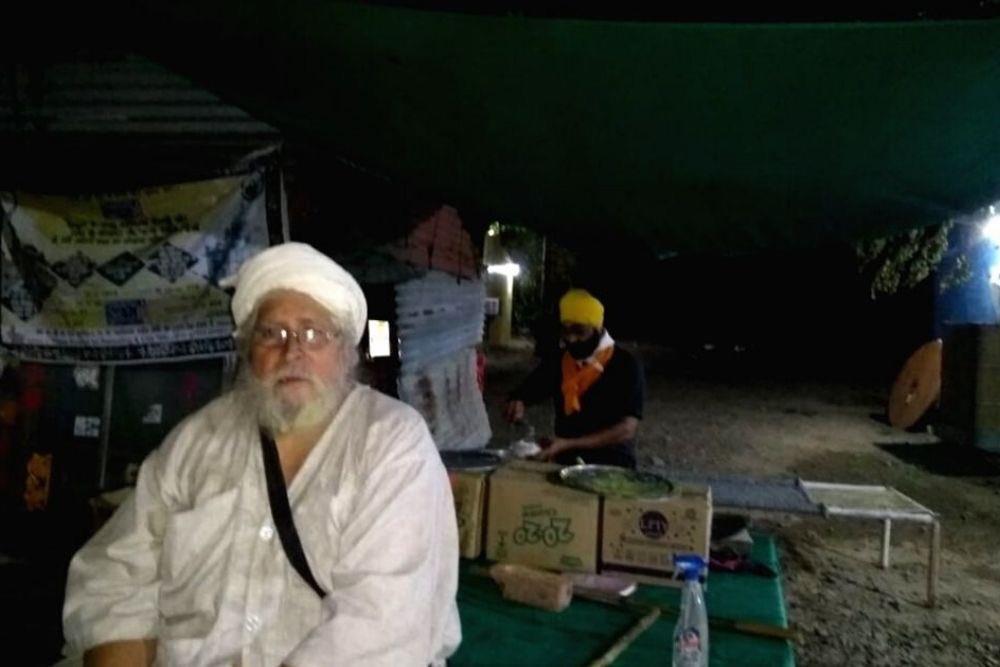
IANS
Yavatmal (Maharashtra), February 12
In a sad and shocking development, a ‘langar’ which fed over two million hungry migrants during the first lockdown year, has been demolished ostensibly owing to certain disputes among the landlords, on a remote corner of Yavatmal National Highway.
The 84-year-old Sikh ‘sevak’ Karnail Singh Khaira, who managed the ‘langar’ to serve the masses for the past 35 years on the Yavatmal NH-7, has been rudely evicted and is practically living on the street.
The ‘langar’ — which became the saviour for lakhs of poor villagers, tribals and migrants on the move during the lockdown period starting March 24, 2020 — was famed as ‘Dera Kar Seva Gurdwara Langar Sahib’, or simply ‘Guru Ka Langar’ near Karanji village.
It was run by Khaira, who is revered as ‘Khaira Baba’ in the region, and immediately after the first nationwide lockdown was clamped, he fed droves and hordes of hungry people landing there, 24×7, free of cost, running only through donations.
“Owing to some disputes among the land owners, a few days ago, the authorities came and demolished the entire 3,000 sq ft ‘langar’ which I had started from scratch, nurtured and built for 35 years,” the dejected Khaira Baba told IANS.
Shiv Sena (UBT) farmers’ leader Kishore Tiwari rushed there for a spot assessment and pointed fingers at the state administration for bringing down the ‘langar’ linked to the historic Gurudwara Bhagod Sahib in Wai, some 11 km away in a forested area.
“There was some bickering among the owners, but this ‘langar’ has been working undisturbed for over 35 years… It rendered yeoman services to millions of hungry people before, during and after the lockdown. The present state government came just seven months ago and ordered its demolition,” fumed Tiwari.
The Sena (UBT) leader assured Khaira Baba that he would demand a proper rehabilitation in the same vicinity, a suitable compensation for all his losses and ensure that the ‘langar’ resurrects again to serve the poor.
On his part, Khaira Baba claimed that it is surprising that although the matter among the owners was pending in the court, the government ordered the demolition and ousted him from there.
“This is a very sensitive issue that has been rashly handled by the state administration. We shall take up the matter seriously with the concerned departments and ministers,” said Tiwari.
It may be recalled that after IANS first highlighted Khaira Baba’s humanitarian services, he and his small team attained global fame for the selfless ‘seva’ provided non-stop to the snaky queues of starving people for months, with nothing available for around 450 km on that desolate highway stretch.
The ‘langar’ was linked to the historic Gurdwara Bhagod Sahib, where the 10th Sikh Guru, Guru Gobind Singh, had stayed in 1705, while enroute Nanded, around 250 km away, where he was assassinated on October 7, 1708.
Nearly 125 years after his martyrdom, the world-famous ‘Gurdwara Takht Hazuri Sahib Sachkhand’ (Nanded) came up and is one of the five Takhts of Sikhism, visited by lakhs of devout Sikhs from all over the world every year.
“As the main Gurdwara Bhagod Sahib is in the jungle, in 1988 this ‘langar’ came up here on the highway and I was assigned to manage it, with the guidance of the Nanded Gurdwara Sahib’s Baba Narinder Singhji and Baba Balwinder Singhji,” recalled Khaira Baba.
After getting the eviction order late in January, Khaira Baba ran helter-skelter, sought the help of FDA Minister Sanjay Rathod in Chief Minister Eknath Shinde’s Cabinet, besides other officials.
“The minister and the officials promised that they would save the ‘langar’, but in the past fortnight, a demolition team with police forces bulldozed the entire place to rubble,” said Khaira Baba, who has nowhere to go now.
Tiwari said that if it was a matter of restoring a tribal property to the owners, as claimed, “then why the huge lands belonging to tribals that have been illegally usurped by many politicians are spared of the government’s bulldozer while a small charitable ‘langar’ of a Gurdwara was singled out for action”.
Senior police inspector of Pandharkawada, Jagdish Mandalwar, confirmed the development but said “we were merely following orders” and had no knowledge about any other issues.
When asked what inspired him to serve millions at the ‘langar’ for 35 years, the Meerut-born Khaira Baba looked at the sky and said: “It’s the Wahe Guru’s ‘marzi’ (decree)… I am only his instrument to serve humanity. I lived and slept at the ‘langar’, ate the same food given to all the people, and my sole belongings on earth are three sets of clothes. Everything came in selfless donations.” The man who fed millions for 35 years is now himself surviving on the dole of some kindly locals. He sleeps in his vehicle at night but remains optimistic that Tiwari and others shall help him restart the ‘langar’ at the earliest.














































































